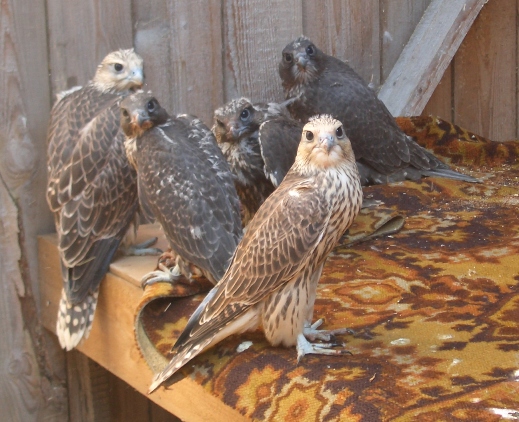AVAILABLE BREEDING AND REINTRODUCTION INTO NATURE – A NEW, PROGRESSIVE, ACTIVE FORM OF ENVIRONMENTAL CONSERVATION ACTIVITIES
Every year, the need to preserve the entire diversity of wildlife, not only in reserves and other specially protected natural areas, but also where natural habitats have undergone significant changes and continue to be intensively transformed under human influence, is becoming more and more obvious. The disappearance of one or another species of natural fauna is far from being as harmless a phenomenon as it might seem at first glance: it clearly indicates a deterioration in the quality of life for most other species of living organisms, including humans.
 People have always had ambivalent attitudes towards feathered predators. On the one hand, they evoked admiration for the grace and swiftness of flight, the excitement and aristocracy of falconry, and inspired artists, sculptors and poets.
People have always had ambivalent attitudes towards feathered predators. On the one hand, they evoked admiration for the grace and swiftness of flight, the excitement and aristocracy of falconry, and inspired artists, sculptors and poets.
But there was another side, a negative one – from an economic point of view, birds of prey were considered competitors and pests, and therefore were outlawed for a long time. The targeted and unlimited extermination of raptors ceased by the mid-1960s. In addition to direct destruction, birds of prey were subjected to pressure from pesticide poisoning, food shortages, and increased mortality in anthropogenic landscapes. Serious limiting factors were the lack of places for nesting and disturbance. As a result of all this, many species were listed in red books of various ranks: from the IUCN Red Book to the Red Book of Russia and the red books of the Subjects of the Federation.
 A decrease in the number of birds of prey seriously disrupts many processes in nature, since they are the top of the food pyramid. Strange as it may seem, predators contribute to the prosperity of the animals that serve as their prey.
A decrease in the number of birds of prey seriously disrupts many processes in nature, since they are the top of the food pyramid. Strange as it may seem, predators contribute to the prosperity of the animals that serve as their prey.
In accordance with the environmental legislation of the Russian Federation,
Specially authorized state bodies for the protection and regulation of the use of wildlife are faced with the task of preserving and restoring rare and endangered species of animals.
The normative and methodological justification for these activities are the recommendations of the Red Book of Russia, which in some cases provide for the introduction into nature of the rarest species of animals on the basis of open-air breeding. Birds of prey occupy a special place among such animals. More than half of their species composition of the Russian fauna is listed in the federal Red Book.
 In order to concentrate efforts in this area, and thanks to Vladimir Evgenievich Flint, the Regional Public Fund for the Protection of Rare Birds “Sapsan” (ROF “Sapsan”) was created in 2000, which tried to bring to life the ideas of this outstanding scientist and wonderful person.
In order to concentrate efforts in this area, and thanks to Vladimir Evgenievich Flint, the Regional Public Fund for the Protection of Rare Birds “Sapsan” (ROF “Sapsan”) was created in 2000, which tried to bring to life the ideas of this outstanding scientist and wonderful person.
Its main task is to restore natural populations of rare birds. In this regard, it is planned to conduct scientific research, carry out captive breeding and introduction into nature. As well as carrying out work on the rehabilitation of sick and injured birds of prey and owls in distress with the aim of returning them to nature.
ROF “Sapsan” is developing methods for using birds of prey for environmental and propaganda purposes.
The priority issues of the Sapsan Regional Foundation include the applied use of birds of prey. In particular, the revival of falconry in Russia, as well as the development and improvement of methods for using birds of prey as biorepellents. The development of falconry is considered from the point of view of Russian historical traditions and the modern form of organizing healthy leisure time for the population.